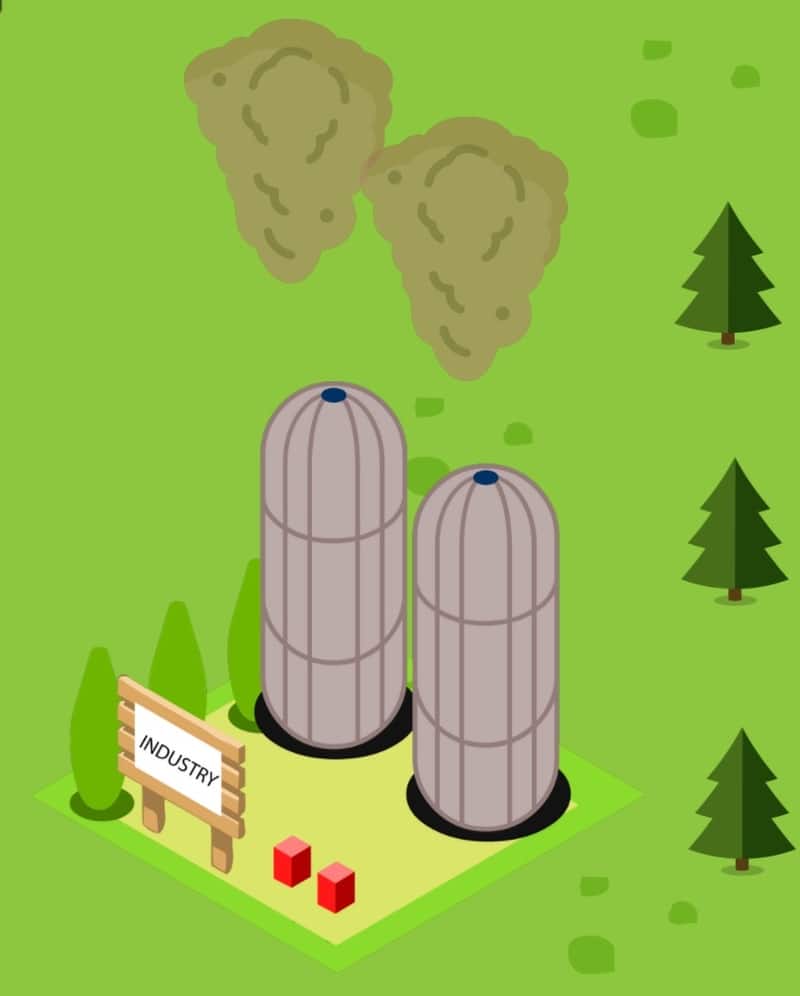Industry
Industry
What is it? 
Industry is a general term for the collection of businesses that manufacture, produce, or process various goods and services within an economy. There are numerous industries and commercial activities in the Bow River Basin, including manufacturing, transportation, tourism, energy production, construction, retail and wholesale, and resource extraction.
How does industry impact water quality in the Bow River Basin?
Industries rely on water for many processes and some industries impact water quality more than others. Water is used as a cleaner, a solvent, a coolant, and a lubricant. If water becomes a by-product of any of these uses (i.e., industrial effluent or wastewater) and is directly deposited into a water body, water quality can be directly impacted.
It is interesting to note that most industrial wastewater has a higher temperature than natural source water (water in lakes or rivers). When wastewater is discharged, it can increase the temperature of the source water. Some aquatic species (such as cold water fish) are sensitive to changes in temperature and may experience adverse effects at, or downstream of, the discharge site.
In addition to these direct impacts, water quality can also be indirectly impacted by the release of industrial materials into the air, which may eventually fall to the ground and be carried into the waterways.
Industrial sites themselves can also impact water quality. Water pollution can be an issue at abandoned oil or gas wells, or closed-down chemical plants. Over time, waste storage facilities or underground infrastructure may become damaged and contaminants can leak into the surface or groundwater system. Contamination can also occur due to spills from pipelines, railways, or storage facilities such tailings ponds.
Common sources of water pollution from industry include:
- leakage due to poor maintenance or construction
- inappropriate disposal practices
- poor handling and storage procedures
- accidental spills
- plant/facility fires, explosions or other accidents
What can we do about it?
Report instances of deleterious substances entering storm drains (contact your local municipality) or waterways by calling the 24 hr Energy & Environmental Response Line 1-800-222-6514 within Alberta.
Routine monitoring of water bodies downstream of industrial activities, current and closed, can help identify if contaminants are leaking.
Government of Canada Pollution Prevention Tools and Tips
Where can I find more information?
Alberta Environment and Parks regulates the amount and release of industrial effluent to protect the environment and human health. Policy guidance for industrial release limts can be found here.
The CCME Canada-wide strategy for the Management of Municipal Wastewater Effluent regulates management of wastewater.
Canadian federal government information page about water quality related to the sustainable development strategy
CCME Canadian Environmental Guidelines
Sources:
Bow River Basin Council. (2005). A report on the state of the Bow River Basin. Retrieved from: http://aep.alberta.ca/water/programs-and-services/water-for-life/partnerships/watershed-planning-and-advisory-councils/documents/BowRiverBasinStateWatershed-May2005.pdf
Government of Canada. (2016, July 1). Water pollution: erosion and sedimentation. Retrieved from: https://www.ec.gc.ca/eau-water/default.asp?lang=En&n=32121A74-1
Alberta Energy. (2017). Minerals. Retrieved from: http://www.energy.alberta.ca/OurBusiness/minerals.asp
Bunch, K. (2017, Aug. 4). Low probability, high impact: radionuclides, nuclear waste, and the Great Lakes. Retrieved from: http://ijc.org/greatlakesconnection/en/2017/08/low-probability-high-impact-radionuclides-nuclear-waste-great-lakes/?utm_content=buffer8866d&utm_medium=social&utm_source=linkedin.com&utm_campaign=buffer
Hussain, M., Prasad Rao, T. (2013). Effect of industrial effluents on surface water quality – a case study of Patancheru, Andhra Pradesh, India. Current World Environment 8(3), 445-454.
